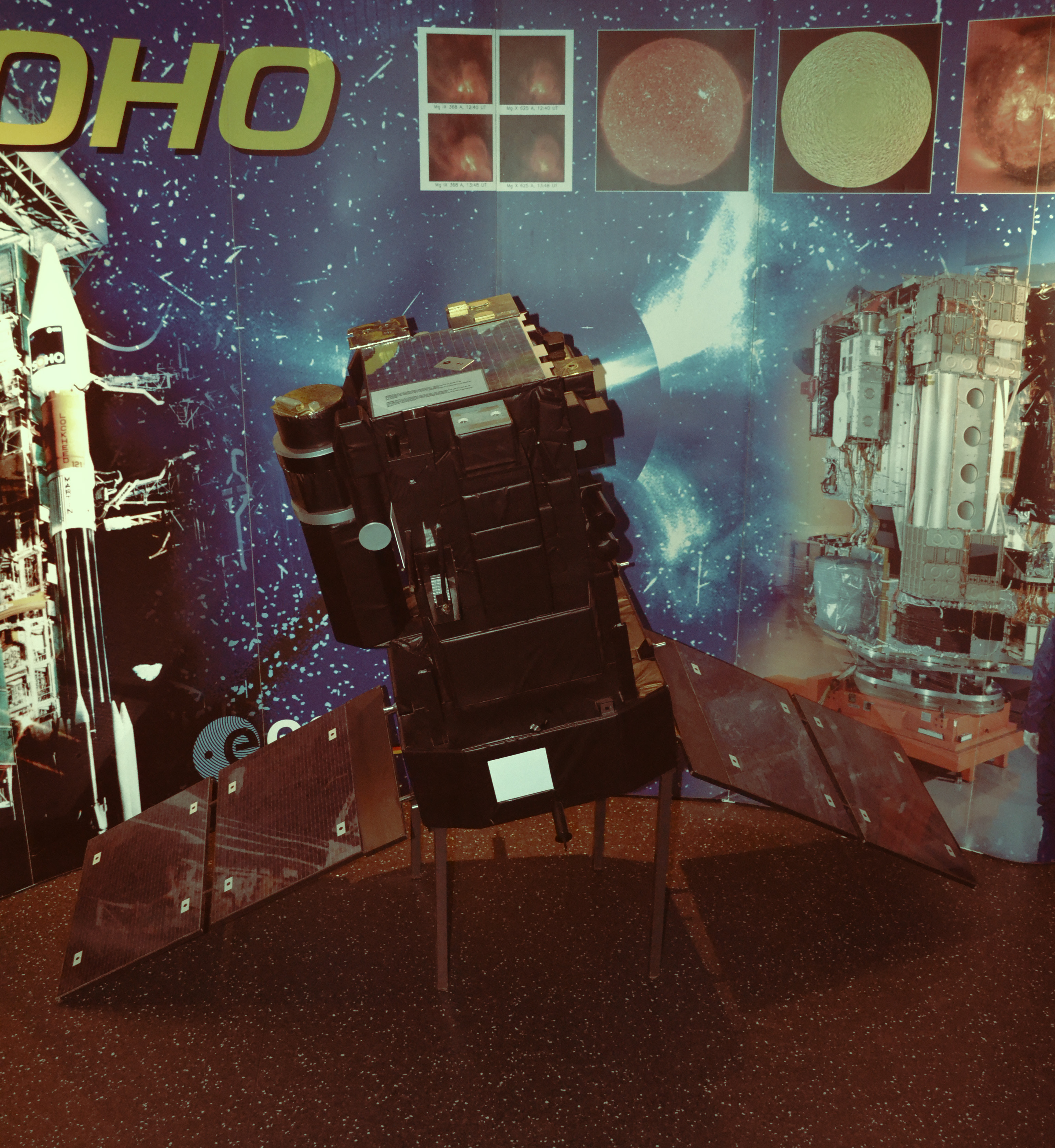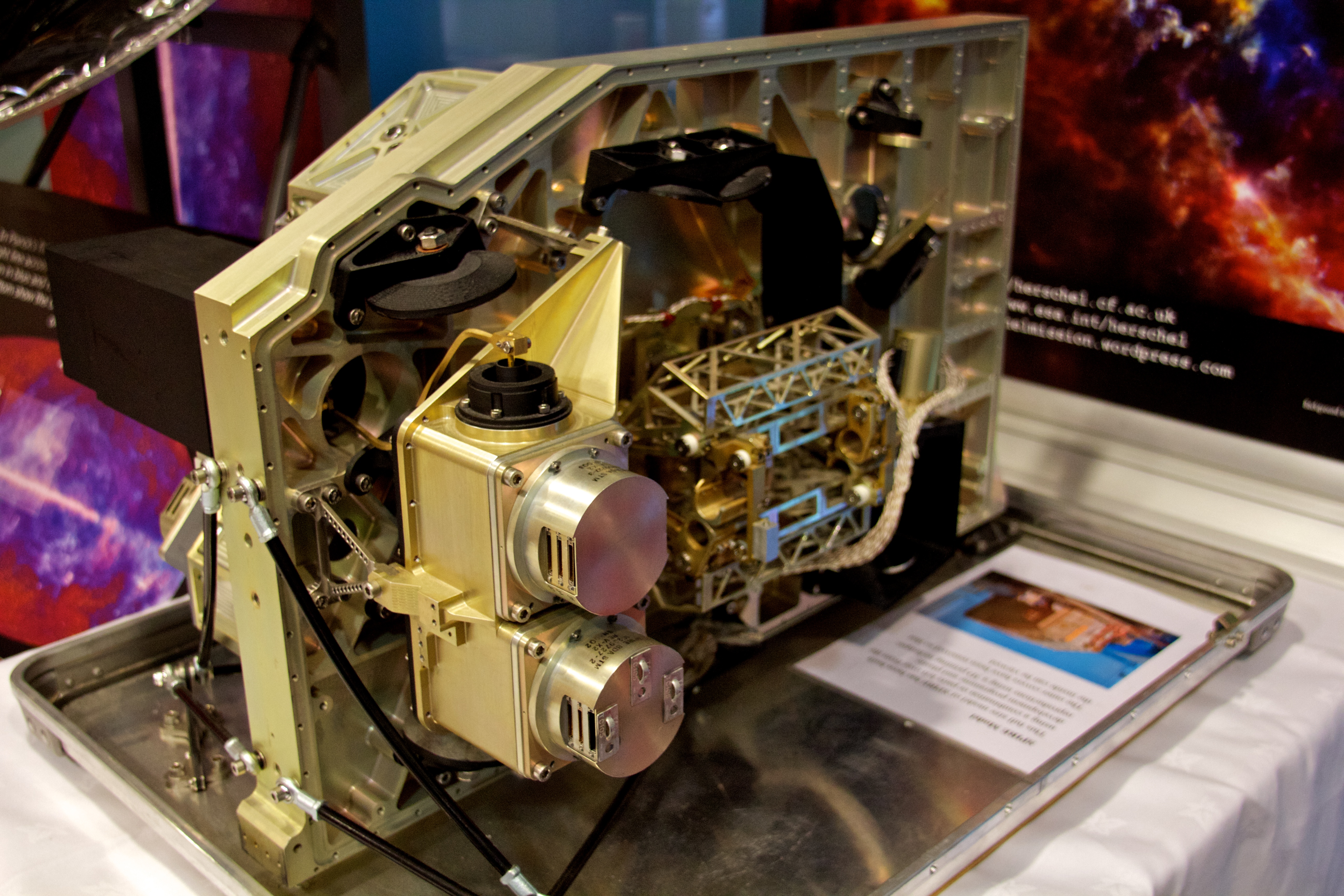|
Mullard Space Science Laboratory
The UCL Mullard Space Science Laboratory (MSSL) is the United Kingdom's largest university space research group. MSSL is part of the Department of Space and Climate Physics at University College London (UCL), one of the first universities in the world to conduct space research. Since its establishment, MSSL has participated in 35 satellite missions, 10 of which are currently in operation, and in over 200 sounding rocket experiments. It takes its name from Mullard Limited, and is located in Holmbury St Mary in the Surrey Hills AONB, near the town of Dorking in the county of Surrey, England. History In 1957 Sir Harrie Massey of UCL directed the first Skylark rocket experiments. In 1962 Massey led a team from UCL, Imperial College London, the University of Birmingham and the University of Leicester that developed many of the instruments on Ariel 1, the world's first multinational spacecraft. By 1966 the demands had outgrown the laboratory space available in London and Massey ask ... [...More Info...] [...Related Items...] OR: [Wikipedia] [Google] [Baidu] |
Ariel 1
Ariel 1 (also known as UK-1 and S-55), was the first British satellite, and the first satellite in the Ariel programme. Its launch in 1962 made the United Kingdom the third country to operate a satellite, after the Soviet Union and the United States. It was constructed in the UK and the United States by NASA Goddard Space Flight Center and SERC, under an agreement reached as the result of political discussions in 1959 and 1960. The US Starfish Prime exoatmospheric nuclear test affected Ariel 1's operational capability. Development In late 1959, the British National Committee for Space Research proposed the development of Ariel 1 to NASA. By early the following year the two countries had decided upon terms for the Ariel programme's scope and which organisations would be responsible for which parts of the programme. The UK Minister of Science named the satellite after the sprite in Shakespeare's ''The Tempest''. Three units were constructed: one for prototyping, a flight unit ... [...More Info...] [...Related Items...] OR: [Wikipedia] [Google] [Baidu] |
TRACE
Trace may refer to: Arts and entertainment Music * Trace (Son Volt album), ''Trace'' (Son Volt album), 1995 * Trace (Died Pretty album), ''Trace'' (Died Pretty album), 1993 * Trace (band), a Dutch progressive rock band * The Trace (album), ''The Trace'' (album) Other uses in arts and entertainment * Trace (magazine), ''Trace'' (magazine), British hip-hop magazine * Trace (manhwa), ''Trace'' (manhwa), a Korean internet cartoon * Trace (novel), ''Trace'' (novel), a novel by Patricia Cornwell * The Trace (film), ''The Trace'' (film), a 1994 Turkish film * The Trace (video game), ''The Trace'' (video game), 2015 video game * Sama (film), ''Sama'' (film), alternate title ''The Trace'', a 1988 Tunisian film * Trace, a fictional character in the game ''Metroid Prime Hunters'' * Trace, the protagonist of ''Axiom Verge'' * Trace, another name for List of One Piece characters#Portgas D. Ace, Portgas D. Ace, a fictional character in the manga ''One Piece'' * TRACE, the main brand for a numb ... [...More Info...] [...Related Items...] OR: [Wikipedia] [Google] [Baidu] |
Solar And Heliospheric Observatory
The Solar and Heliospheric Observatory (SOHO) is a European Space Agency (ESA) spacecraft built by a European industrial consortium led by Matra Marconi Space (now Airbus Defence and Space) that was launched on a Lockheed Martin Atlas IIAS launch vehicle on 2 December 1995, to study the Sun. It has also discovered over 4,000 comets.(2,703 discoveries as of 21 April 2014) It began normal operations in May 1996. It is a joint project between the (ESA) and . SOHO was part of the Interna ... [...More Info...] [...Related Items...] OR: [Wikipedia] [Google] [Baidu] |
Yohkoh
Yohkoh (, ''Sunbeam'' in Japanese), known before launch as Solar-A, was a Solar observatory spacecraft of the Institute of Space and Astronautical Science (Japan), in collaboration with space agencies in the United States and the United Kingdom. It was launched into Earth orbit on August 30, 1991 by the M-3SII rocket from Kagoshima Space Center. It took its first soft X-ray image on September 13, 1991, 21:53:40, and movie representations of the X-ray corona over 1991-2001 are available at thYohkoh Legacy site Description The satellite was three-axis stabilized and in a near-circular orbit. It carried four instruments: a Soft X-ray Telescope (SXT), a Hard X-ray Telescope (HXT), a Bragg Crystal Spectrometer (BCS), and a Wide Band Spectrometer (WBS). About 50 MB were generated each day and stored on board by a 10.5 MB bubble memory recorder. Because SXT utilized a charge-coupled device (CCD) as its readout device, perhaps being the first X-ray astronomical telescope to do ... [...More Info...] [...Related Items...] OR: [Wikipedia] [Google] [Baidu] |
Swift Gamma Ray Burst Explorer
Neil Gehrels Swift Observatory, previously called the Swift Gamma-Ray Burst Explorer, is a NASA three-telescope space observatory for studying gamma-ray bursts (GRBs) and monitoring the afterglow in X-ray, and UV/Visible light at the location of a burst. It was launched on 20 November 2004, aboard a Delta II launch vehicle. Headed by principal investigator Neil Gehrels until his death in February 2017, the mission was developed in a joint partnership between Goddard Space Flight Center (GSFC) and an international consortium from the United States, United Kingdom, and Italy. The mission is operated by Pennsylvania State University as part of NASA's Medium Explorer program (MIDEX). The burst detection rate is 100 per year, with a sensitivity ~3 times fainter than the BATSE detector aboard the Compton Gamma Ray Observatory. The Swift mission was launched with a nominal on-orbit lifetime of two years. Swift is a NASA MIDEX (medium-class Explorer) mission. It was the third to be lau ... [...More Info...] [...Related Items...] OR: [Wikipedia] [Google] [Baidu] |
Herschel Space Observatory
The Herschel Space Observatory was a space observatory built and operated by the European Space Agency (ESA). It was active from 2009 to 2013, and was the largest infrared telescope ever launched until the launch of the James Webb Space Telescope in 2021. Herschel carries a mirror and instruments sensitive to the far infrared and submillimetre wavebands (55–672 µm). Herschel was the fourth and final cornerstone mission in the Horizon 2000 programme, following ''SOHO''/'' Cluster II'', ''XMM-Newton'' and ''Rosetta''. The observatory was carried into orbit by an Ariane 5 in May 2009, reaching the second Lagrangian point (L2) of the Earth–Sun system, from Earth, about two months later. Herschel is named after Sir William Herschel, the discoverer of the infrared spectrum and planet Uranus, and his sister and collaborator Caroline Herschel. The observatory was capable of seeing the coldest and dustiest objects in space; for example, cool cocoons where stars form and ... [...More Info...] [...Related Items...] OR: [Wikipedia] [Google] [Baidu] |
Cassini Mission
Cassini may refer to: People * Cassini (surname) * Oleg Cassini (1913-2006), American fashion designer :Cassini family: * Giovanni Domenico Cassini (1625–1712), Italian mathematician, astronomer, engineer, and astrologer * Jacques Cassini (1677–1756), French astronomer, son of Giovanni Domenico Cassini * César-François Cassini de Thury (1714–1784), French astronomer and cartographer, son of Jacques Cassini * Jean-Dominique, comte de Cassini (1748–1845), French astronomer, son of César-François Cassini de Thury * Alexandre Henri Gabriel de Cassini (1781–1832), French botanist and naturalist, son of Jean-Dominique de Cassini Planetary science * Cassini's laws on the motion of the Moon * Cassini Division, a gap in the rings of Saturn * '' Cassini–Huygens'', the space mission to examine Saturn and its moons, of which the ''Cassini'' orbiter was a part * Cassini (Martian crater) * Cassini (lunar crater) * 24101 Cassini, an asteroid * 24102 Jacquescassini, another as ... [...More Info...] [...Related Items...] OR: [Wikipedia] [Google] [Baidu] |
NASA
The National Aeronautics and Space Administration (NASA ) is an independent agency of the US federal government responsible for the civil space program, aeronautics research, and space research. NASA was established in 1958, succeeding the National Advisory Committee for Aeronautics (NACA), to give the U.S. space development effort a distinctly civilian orientation, emphasizing peaceful applications in space science. NASA has since led most American space exploration, including Project Mercury, Project Gemini, the 1968-1972 Apollo Moon landing missions, the Skylab space station, and the Space Shuttle. NASA supports the International Space Station and oversees the development of the Orion spacecraft and the Space Launch System for the crewed lunar Artemis program, Commercial Crew spacecraft, and the planned Lunar Gateway space station. The agency is also responsible for the Launch Services Program, which provides oversight of launch operations and countdown management f ... [...More Info...] [...Related Items...] OR: [Wikipedia] [Google] [Baidu] |
European Space Research Organisation
The European Space Research Organisation (ESRO) was an international organisation founded by 10 European nations with the intention of jointly pursuing scientific research in space. It was founded in 1964. As an organisation ESRO was based on a previously existing international scientific institution, CERN. The ESRO convention, the organisations founding document outlines it as an entity exclusively devoted to scientific pursuits. This was the case for most of its lifetime but in the final years before the formation of ESA, the European Space Agency, ESRO began a programme in the field of telecommunications. Consequently, ESA is not a mainly pure science focused entity but concentrates on telecommunications, earth observation and other application motivated activities. ESRO was merged with ELDO in 1975 to form the European Space Agency. [...More Info...] [...Related Items...] OR: [Wikipedia] [Google] [Baidu] |
Australia
Australia, officially the Commonwealth of Australia, is a Sovereign state, sovereign country comprising the mainland of the Australia (continent), Australian continent, the island of Tasmania, and numerous List of islands of Australia, smaller islands. With an area of , Australia is the largest country by area in Oceania and the world's List of countries and dependencies by area, sixth-largest country. Australia is the oldest, flattest, and driest inhabited continent, with the least fertile soils. It is a Megadiverse countries, megadiverse country, and its size gives it a wide variety of landscapes and climates, with Deserts of Australia, deserts in the centre, tropical Forests of Australia, rainforests in the north-east, and List of mountains in Australia, mountain ranges in the south-east. The ancestors of Aboriginal Australians began arriving from south east Asia approximately Early human migrations#Nearby Oceania, 65,000 years ago, during the Last Glacial Period, last i ... [...More Info...] [...Related Items...] OR: [Wikipedia] [Google] [Baidu] |
Woomera Test Range
The RAAF Woomera Range Complex (WRC) is a major Australian military and civil aerospace facility and operation located in South Australia, approximately north-west of Adelaide. The WRC is operated by the Royal Australian Air Force (RAAF), a division of the Australian Defence Force (ADF). The complex has a land area of or roughly the size of North Korea or Pennsylvania. The airspace above the area is restricted and controlled by the RAAF for safety and security. The WRC is a highly specialised ADF test and evaluation capability operated by the RAAF for the purposes of testing defence materiel. The complex has been variously known as the Anglo-Australian Long Range Weapons Establishment and then the Woomera Rocket Range; the RAAF Woomera Test Range and in 2013, the facility was reorganised and renamed to the RAAF Woomera Range Complex (WRC). The ground area of the WRC is defined by the Woomera Prohibited Area (WPA) and includes the Nurrungar Test Area (NTA); with a land area of ... [...More Info...] [...Related Items...] OR: [Wikipedia] [Google] [Baidu] |

.jpg)




